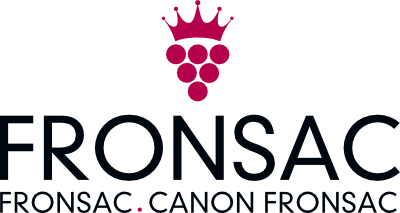The vineyards: the garden of Bordeaux
An exceptional terroir
The soils of Fronsac and Canon Fronsac are essentially limestone and clay-over-limestone on the plateaus and hillsides, with areas of siliceous – sandy – clay at the foot of the slopes.
Calcareous limestone predominates on the hills and plateaus, while the celebrated Fronsac ‘molasses’ clay is found on the slopes and foothills, accentuated by the contours that are typical of the terrain. This exceptional terroir established the reputation of which many great appellations are justly proud, including neighbouring Saint-Emilion.
The quality of the soil coupled with a generally plentiful supply of natural water creates the richness and complexity of both Fronsac and Canon Fronsac wines.
The late Professor Henri Enjalbert, the pre-eminent specialist in wine geology at the University of Bordeaux, described this terroir as “the historic cradle of the great Bordeaux wines of Libourne” and “the sacred hillside of the region”.

A land of Merlot
Nearly 80% of the vine stock is an early-ripening variety of Merlot that is particularly adapted to Fronsac’s clay-limestone soils. Because it is so well-suited to the terroir, it can attain its full maturity here.
The ripened grapes bring colour and generous alcoholic content to the wine, coupled with a marvellous aromatic complexity (especially ripe red and black fruits). The result is a supple, well-rounded wine of great silkiness on the palate.

Cabernet Franc
Cabernet Franc accounts for nearly 15% of the vine stock. Ripening later than Merlot, it tends to be used on chalky soil, or sandy soils that have a slightly warmer texture.
Rich in tannin, it gives the wine a freshness and a slightly spicy, aromatic finesse making it ideal for ageing.

Cabernet Sauvignon
Cabernet Sauvignon represents less than 10% of plantings in the Fronsac and Canon Fronsac appellations. Late ripening, it is particularly suited to hot, dry soils, such as sandy clay, or well-exposed clayey limestone soils.
It gives the wine spicy, complex notes and a rich tannicity favouring long conservation.

A history of the terroir and its people
Perfectly situated at the confluence of the Isle and the Dordogne rivers, Fronsac, Canon Fronsac and their vineyards are proud of their rich history. At the southernmost point of the appellation, the 76m (250ft) high Butt of Fronsac gives a spectacular, panoramic view of the two rivers. It has been a strategic position for millennia: the Gauls chose it as the site for an important market and the Romans consecrated an altar there. Later, around 770, AD Charlemagne built a fortress, setting up camp in Fronsac during its construction. Today, Fronsac is justly proud of the fact that “Fronciacus” appears in letters written by Charlemagne’s chronicler, Eginhard.
Being located on one of the principal routes of pilgrimage to Santiago de Compostela, a flourishing religious emerged from the 8th century onwards, leading to the founding of a number of hospitals, including at Lariveau in Fronsac, established by the Knights of Malta for pilgrims.
Later, during the English occupation of Bordeaux, from the 12th to 15th centuries, Fronsac wines were widely exported to England.
Until the reign of Louis XIII, the summit of the Butt of Fronsac was entirely covered by an immense castle.
In 1663, the Duke of Richelieu decided to acquire the lands of the Duchy of Fronsac for his family. His great nephew, Marshal Louis-François Armand du Plessis, nicknamed “Fronsac”, inherited the Duchy. The marshal, a great libertine and a friend of Casanova, greatly extended the reputation of Fronsac wines. On the ruins of the old fortress, he built a folly, known literally as the “Theatre of gallant celebrations” holding “gallant” evening revels that were much sought after. So successful were these revels that the fame of Fronsac wines reached the court of Louis XIV.
From the late 17th century, the fame of Fronsac’s wines grew. It was here in the 18th century that there was an upsurge in the quality of Libournais wines, which, coupled with the boom in worldwide maritime trade, helped to establish Fronsac’s vineyards as among the finest in Bordeaux.



